Burnout rates have reached epidemic levels, with 76% of employees reporting workplace exhaustion according to recent Gallup research.
While productivity culture promises fulfillment through constant optimization and relentless achievement, millions are discovering that the path to genuine well-being lies in the opposite direction. Slow living represents a quiet revolution against the tyranny of busyness.
This movement isn’t about laziness or lack of ambition—it’s about intentionally choosing quality over quantity, depth over surface-level accomplishments, and sustainable practices over unsustainable sprint-based living.
The philosophy challenges our deeply ingrained beliefs about success, productivity, and worth. Instead of measuring value through packed schedules and endless to-do lists, slow living advocates for deliberate choices that align with personal values and long-term health.
Understanding the Slow Living Philosophy
Core Principles of Mindful Living
Slow living rests on several foundational concepts that directly counter hustle culture messaging. First, it prioritizes presence over productivity. Rather than rushing through experiences to check boxes, practitioners focus fully on each moment and activity.
The philosophy also emphasizes quality relationships over networking quantity. This means nurturing fewer, deeper connections rather than maintaining superficial contact with hundreds of acquaintances for potential career advancement.
Sustainability forms another cornerstone—both environmental and personal. Slow living practitioners make choices that can be maintained long-term without depleting resources or causing personal exhaustion.
The Science Behind Sustainable Pacing
Research consistently shows that our brains function optimally with regular rest periods. The default mode network, discovered through neuroscience studies, requires downtime to process information and generate creative insights.
Chronic stress from constant activity triggers elevated cortisol levels, leading to decreased immune function, impaired memory, and increased anxiety. Slow living practices help regulate these stress responses by building in natural recovery periods.
Studies on cognitive load theory demonstrate that our mental processing capacity is finite. When we overload this system with constant stimulation and decision-making, performance decreases across all areas.
Recognizing Burnout and Its Hidden Symptoms
Physical Manifestations of Chronic Stress
Burnout recovery often begins with recognizing subtle physical symptoms that many attribute to normal aging or busy lifestyles. Chronic fatigue that doesn’t improve with sleep, frequent headaches, and digestive issues can all signal nervous system overload.
Sleep disruption represents another common indicator. Many burned-out individuals experience racing thoughts at bedtime, frequent waking, or feeling unrefreshed despite adequate sleep hours.
Muscle tension, particularly in the neck, shoulders, and jaw, often accompanies chronic stress. This physical holding pattern can become so normalized that people forget what relaxation feels like.
Emotional and Mental Warning Signs
Emotional numbness frequently develops as a protective mechanism against overwhelming demands. People report feeling disconnected from activities they once enjoyed or struggling to access their usual emotional range.
Increased irritability and decreased patience signal nervous system dysregulation. Small inconveniences begin feeling like major crises, and normal relationship friction becomes unbearable.
Cognitive symptoms include difficulty concentrating, memory problems, and decision fatigue. The mental fog that many experience isn’t a personal failing—it’s a biological response to prolonged stress.
Creating Your Personal Slow Living Framework
Establishing Boundaries Around Time and Energy
Effective slow living begins with an honest assessment of current commitments and their alignment with personal values. This process involves examining not just professional obligations, but social commitments, family expectations, and self-imposed standards.
Creating a “not-to-do” list often proves more valuable than adding items to existing task lists. This might include saying no to social events that drain energy, declining volunteer positions that don’t align with passions, or eliminating activities done solely from obligation.
Time blocking for rest and reflection becomes as important as scheduling work tasks. Many practitioners find that protecting specific hours for unstructured time prevents the gradual erosion of leisure by urgent but non-important demands.
Designing Supportive Daily Rhythms
Slow living isn’t about doing everything slowly—it’s about finding a mindful pace that allows for both productivity and restoration. This might mean batch-processing similar tasks to create flow states rather than constantly switching between different types of work.
Morning routines that prioritize nervous system regulation set the tone for sustainable energy throughout the day. This could include meditation, gentle movement, journaling, or simply drinking coffee without simultaneously checking email.
Evening rituals help transition from active to rest mode. Research shows that consistent wind-down routines improve sleep quality and next-day performance more than sporadic attempts at relaxation.
Practical Strategies for Burnout Recovery
Nervous System Regulation Techniques
Burnout recovery requires actively resetting an overstimulated nervous system. Deep breathing exercises, particularly those that emphasize longer exhales than inhales, activate the parasympathetic nervous system responsible for rest and restoration.
Progressive muscle relaxation helps release chronic tension patterns. Many people carry stress physically without awareness, and systematic relaxation practices restore the body’s natural ability to shift between activation and rest.
Spending time in nature provides measurable stress reduction benefits. Forest bathing, or simply sitting outdoors without digital devices, has been shown to lower cortisol levels and improve mood regulation.
Redefining Productivity and Success Metrics
Conventional productivity measurements often perpetuate the cycle of burnout by focusing exclusively on output quantity. Slow living practitioners develop alternative metrics that include well-being indicators alongside achievement markers.
This might mean tracking energy levels throughout the day, measuring relationship satisfaction, or monitoring creativity and inspiration levels. These qualitative metrics provide insight into sustainable versus unsustainable activity patterns.
Success redefinition often involves expanding beyond career achievements to include personal growth, relationship depth, community contribution, and life satisfaction measures.
Building Community in Slow Living Practice
Finding Like-Minded Individuals
Transitioning to slow living can feel isolating when surrounded by hustle culture messaging. Finding community with others who share similar values provides essential support and normalizes alternative approaches to success.
Online communities offer connection points for those in areas where slow living isn’t widely practiced. These groups share practical strategies, celebrate non-traditional achievements, and provide accountability for maintaining boundaries.
Local groups focused on mindfulness, sustainability, or community service often attract individuals interested in more intentional living approaches. Book clubs, meditation groups, and volunteer organizations can provide real-world connections.
Creating Supportive Relationships
Existing relationships may require gentle education about slow living choices. Friends and family accustomed to busy schedules might initially interpret decreased availability as rejection rather than self-care.
Clear communication about values and boundaries helps others understand the intentionality behind lifestyle changes. Explaining the difference between laziness and deliberate rest can prevent misunderstandings.
Setting expectations around response times, availability, and commitment levels protects both relationships and personal boundaries. Many practitioners find that the quality of connections improves even as quantity may decrease.
Navigating Professional Life With Slow Living Values
Workplace Boundary Management
Implementing slow living principles in professional settings requires strategic boundary-setting that protects personal values while maintaining career effectiveness. This often begins with time management approaches that prioritize deep work over constant availability.
Email and communication boundaries become essential tools. This might include designated times for checking messages rather than constant monitoring, using auto-responders that set realistic expectations, and distinguishing between urgent and truly urgent communications.
Project management approaches can incorporate slow living principles by focusing on sustainable pacing rather than crisis-driven deadlines. This includes building buffer time into estimates and advocating for realistic timelines.
Career Path Considerations
Some professionals discover that their current career path fundamentally conflicts with slow living values. This recognition might prompt exploration of alternative roles, industries, or work arrangements that better support personal well-being.
Remote work, freelancing, or part-time arrangements can provide more control over daily rhythms and environmental factors. However, these options require strong self-management skills to prevent work from expanding into all available time.
Career advancement redefinition might mean prioritizing roles that offer learning opportunities, meaningful work, and sustainable demands over positions focused solely on salary or status increases.
The Long-Term Benefits of Mindful Pacing
Research on sustainable lifestyle practices shows that individuals who prioritize well-being alongside achievement report higher life satisfaction, better physical health, and stronger relationships over time.
The immediate sacrifices required for slow living adoption often yield compound benefits across multiple life areas.
Creativity and innovation frequently increase when individuals allow for regular rest and reflection periods. Many breakthrough ideas emerge during downtime rather than intense work sessions, suggesting that constant productivity may limit creative potential.
Professional longevity improves with sustainable pacing approaches. Individuals who avoid burnout cycles maintain higher performance levels throughout their careers rather than experiencing periodic crashes and recovery periods.
Personal relationships deepen when individuals have adequate energy and attention to invest in connections. The quality improvements in close relationships often more than compensate for any reduction in social circle size.
Making the Transition Sustainable
The shift toward slow living requires patience with the adjustment process. Most individuals find that initial attempts feel uncomfortable or trigger anxiety about productivity and achievement.
These reactions are normal responses to cultural conditioning rather than indicators of personal weakness.
Starting with small experiments rather than dramatic lifestyle overhauls increases success probability. This might mean implementing one slow living principle per month rather than attempting complete transformation simultaneously.
Regular evaluation and adjustment ensure that slow living practices continue serving their intended purpose rather than becoming rigid rules. The goal is increased well-being and life satisfaction, not perfect adherence to any particular framework.
Slow living represents a return to human-scale living that honors both productivity and restoration. By choosing a mindful pace over relentless acceleration, individuals can create lives that are both meaningful and sustainable.
This soft rebellion against hustle culture offers a path toward genuine fulfillment that doesn’t require sacrificing health, relationships, or personal values for external measures of success.






